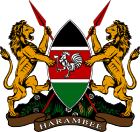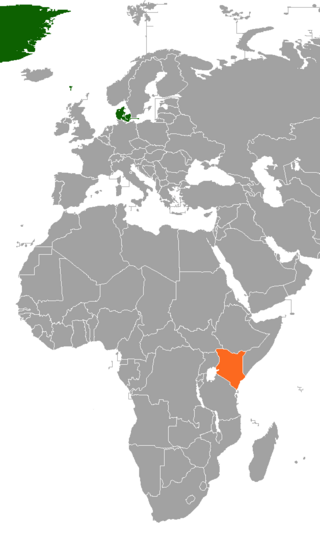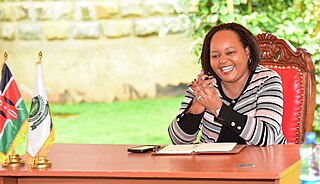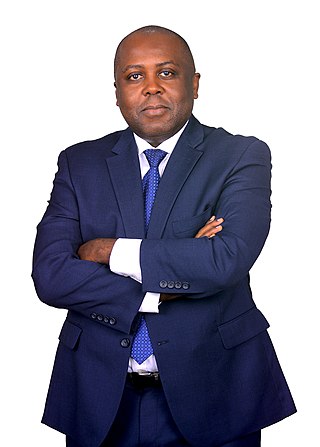Economic
This pillar seeks to improve the prosperity of all Kenyans through an economic development programme, covering all the regions of Kenya. It aims to achieve an average Gross Domestic Product (GDP) growth rate of 10 percent per annum until 2030. To achieve this target, Kenya is continuing with the tradition of macro-economic stability that has been established since 2002. It is also addressing other key constraints, notably, a low savings to GDP ratio, which can be alleviated by drawing in more remittances from Kenyans abroad, as well as increased foreign investment and overseas development assistance (ODA).
Delivering the country's ambitious growth aspirations required a rise of national savings from 17 percent in 2006 to about 30 percent in 2012. It was also found necessary to deal with a significant informal economy employing 75 percent of the country's workers. The informal sector is being supported in ways that will raise productivity and distribution and increase jobs, owner's incomes and public revenues. Further, the country is continuing with the governance and institutional reforms necessary to accelerate economic growth. Other critical problems being addressed include poor infrastructure and high energy costs.
The six key sectors highlighted below are being given priority as the key growth drivers for achievement of the economic pillar of Vision 2030:
- Wholesale & Retail Trade
- Manufacturing
- Agriculture & Livestock
- Business Process Outsourcing
- Financial Services
- Tourism
- Oil, Gas & Mineral Resources
- Blue economy
It is notable that with each Government comes spheres of interest, but this has not been necessarily so in Kenya. The new administration of Dr. William Ruto has picked five key economic deliverables characterized as "The Bottom-Up Economic Transformation Agenda (BETA)" which are entrenched in the Vision 2030 framework. These are:
1. Agriculture
2. Micro, Small and Medium Enterprise (MSME) economy
3. Housing and settlement
4. Healthcare
5. Digital Superhighway and Creative Economy
These key pillars were as a result of the hotly contested elections of 2017 that led to an annulment of the Presidential vote by the country's Supreme Court led by Chief Justice Maraga.
Notwithstanding same over 10,000 km s of road are to be tarmacked in the period 2013 to 2022 with 3000 km in progress by 2018.
SGR (Standard Gauge Railway) modernisation of Kenya Railway system on the southern Corridor phase 1 is complete from Mombasa to Nairobi while phase 2 Nairobi to Naivasha is in progress as of May 2018; with the longest Rail tunnel in Africa at Kibiko, Ngong in advanced stages. Tendering of 3rd phase is in Progress .
Under LAPSSET A key deliverable Under vision 2030, Isiolo Airport is complete as of 2017, while Konza City and Lamu Port have received renewed interest in 2018.
Either Road works completed under vision 2030 include Mombasa Road, with major funds still being pumped in, Thika Super Highway or commonly known as( Kibaki Free Way ) due its convenience, Outerring Road, Southern Bypass, Eastern By pass and Northern Bypass. Others include Ngong Road expansion and Langata road expansion.
Major malls with grade one offices in what has been characterized as Public Private partnership have been constructed and completed in Nairobi and its environs. This include Garden city and TRM on Thika Superhighway, Two Rivers Mall along the Northern Bypass and Limuru Road.
Even so, the advent of devolution with 47 county governments has thrust Kenya into one investment destination with individual Counties competing to bring investors within their borders and or regions. This has become a major catalyst for growth as county headquarters have become new centres of growth even as key roads continue to be commissioned, as in the case of Marsabit, an oasis in a desert after completion of Isiolo- Marsabit to Ethiopia border Highway a part of Cape Cairo Pan African Highway. This among many such regional projects in progress is positioning every region in Kenya and the neighboring countries to Profit from Vision 2030, a brainchild of 3rd president of Kenya Late H.E Emilio Mwai Kibaki EGH.
Vision 2030, a vision that showed the dreams and aspirations of Kenyans remains on course. However, perennial budget deficits continue to impede its completion.
These has included major expansions of JKIA, Nairobi, Moi International Airport, Mombasa, Kisumu International Airport and Nairobi-Nakuru Highway still in progress. Major roads in Kisumu, Mombasa and Nairobi are currently under major expansions as per vision 2030. Moreover, the expansion of infrastructure in both the Northern and Southern Transport Corridor is currently in progress.
This has included projects in power with renewable energy taking centre stage with geothermal power plants in Ol Karia, Naivasha and wind farms in Ngong Hills, Turkana and Marsabit. A major reliance of the country's power needs is now in renewable energy sources with the country eager to attract funds from international partners as the tightening of monetary policy becomes severe post 2017 interest capping regime in Kenya's Banking sector. This has seen China emerge as the biggest holder of Kenyan foreign debt at more than 60% in May 2018 at over KSh700 billion/=.
Investments in technological hubs have led to Nairobi being termed as Africa's Silicon Savannah with products such as M-pesa getting acclaimed globally. Developments in ICT have seen government services, financial services become more inclusive with introduction of services such as Huduma Centres, Lipa na Mpesa. This has made Kenya jump directly from agricultural revolution to Information revolution within a decade.
Industrialisation has received renewed focus, as part of Uhuru Kenyatta's Big Four Agenda.
Exploitation of mineral wealth with major discoveries in gold, oil, coal and rare earth deposits, among others, presents a big boost towards funding.
Political
This aims to realize a democratic political system founded on issue-based politics that respects the rule of law, and protects the rights and freedoms of every individual in Kenyan society. It hopes to transform Kenya into a state in which equality is entrenched, irrespective of one's race, ethnicity, religion, gender, or socioeconomic status; a nation that respects and harnesses the diversity of its peoples' values, traditions, and aspirations for the benefit of all its citizens.
The political pillar vision for 2030 is "a democratic political system that is issue-based, people-centered, result-oriented and accountable to the public". An issue-based system is one in which political differences are about means to meet the widest public interest. "People-centered" goals refer to the system's responsiveness to the needs and rights of citizens, whose participation in all public policies and resource allocation processes are both fully appreciated and facilitated. A result-oriented system is stable, predictable and whose performance is based on measurable outcomes. An accountable system is one that is open and transparent and one that permits the free flow of information. This vision is expected to guarantee Kenya's attainment of the specific goals outlined under Vision 2030's economic and social pillars.
To meet objectives outlined in the economic and social pillars, Kenya's national governance system is being transformed and reformed to acquire high-level executive capability consistent with a rapidly industrializing country. The country is adopting a democratic decentralization process with substantial devolution in policy-making, public resource management, and revenue sharing through devolved funds. This has been achieved through the delivery of a new constitutional dispensation which came in effect in August 2010.
Transformation within Kenya's political governance system under Vision 2030 is expected to take place across six strategic initiatives, whose overarching visions, goals and specific strategies for 2012 are as follows:
- Rule of law
- Electoral & political processes
- Democracy and public service delivery
- Transparency and accountability
- Security, peacebuilding and conflict management















